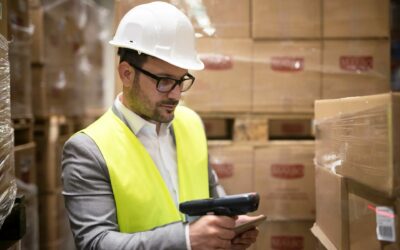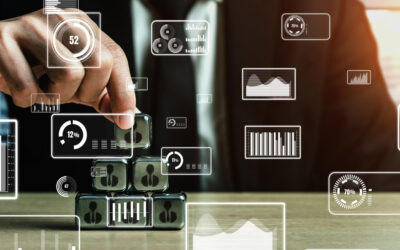Tools and equipment tracking is all the hype nowadays. You might’ve heard a lot about it if you work in construction or any other tool-intensive industry. You might also have heard how it helps you save a lot of time and money. But seldom does anyone talk you through what it really is.
If you’re making up your mind as to whether to get a tool tracking system, you’d want to get to know more about its basics. It’s your lucky day because you’ve come to the right place to know what exactly a tool tracking program is and how it works.
Why is this the right place? We’ll tell you all about inventory tracking and all that you need to do to make it work in a quick 4-minute read. In the end, you’ll be introduced to an industry-leading tool tracking software that you can utilise to upgrade your tool management instantly!
What is a Tool Tracking System?
itemit’s tools and equipment tracking software, otherwise known as tool tracking system, is a smart and streamlined way to track all your tools, no matter how small or large they are. You can add and track individual tools in their respective asset profiles. You can name them, enter their details and even add images!
Of course, itemit organises a tool’s data in an elegant and organised manner, so you’re never caught up in a mess of jumbled-up information. Looking up a particular piece of equipment also becomes a walk in the park with the itemit’s tool tracking system. It gives you a clear overview of all the tools you have, where they are, who has them and every other intricate detail that’s worth recording.
What’s more, all of this information is stored in an online database and can be accessed by you at any time with any device with an internet connection. Apart from you, your team members can also access and track tools so that every tool is tracked in real-time.
Benefits of Using a Tool Tracking System
Implementing a tool tracking system brings several key advantages that streamline business operations:
- Enhanced Accountability: With a proper tool tracking solution in place, accountability across your team increases dramatically. Knowing who checked out which tool and when ensures that everyone takes responsibility for the assets they use. Misplaced tools can be a major issue in industries such as construction, so knowing where each tool is at any given time helps reduce these risks.
- Time and Cost Savings: Without a tool tracking system, hours can be wasted searching for misplaced tools or sorting through paperwork to find the required information. A digital solution like itemit saves valuable time by providing instant access to your tool inventory. As a result, your team spends more time on productive tasks rather than tracking down equipment.
- Maintenance Tracking: Tools and equipment require regular maintenance to stay in optimal working condition. Tool tracking systems allow you to schedule maintenance reminders and log repair history, ensuring that no piece of equipment is neglected.
- Reduced Loss and Theft: Asset tags and check-in/check-out features reduce the chances of tools being lost or stolen. The ability to track usage also deters misuse of company assets.
Adding a Tool to the Tool Tracking Software
It all begins with adding a tool to the system, and it’s as easy as it gets.
- Open the itemit app or web portal to add a new tool.
- You’ll see a button that says ‘Add’. Click on it.
- Add the tool’s name and other details you wish to track.
- This adds the tool to your itemit asset register.
Once a tool has been added, it becomes a part of the itemit system. You and your team members can view it by logging into itemit from any device. So, now that you’ve added a tool, what happens next?
Well, it depends. You could either assign a tool to an employee, start using the booking and check-in/check-out feature, or you could leave it until the tool’s details change in some way, and you have to update it on the tool tracking system.
Assigning Tools to Employees
Every member of your team will have a specific set of tools they work with. So, all the tools and equipment that one individual is using can be assigned to them via itemit. This allows you to see instantly who is responsible for which tool.
To assign a tool:
- Open the asset profile in the app.
- Click ‘Assign to a User.’
- Choose an itemit user or a contact from your list of contacts.
- You have successfully assigned a tool to a team member.
Assigning tools to employees organises your tools better and promotes responsibility among employees for the tools that are assigned to them. This way, each employee is responsible for tracking and keeping tool details up-to-date in their respective asset profiles.
Innovative Ways Businesses Use Tool Tracking
Tool tracking isn’t just about monitoring equipment—it can transform the way businesses operate across different industries. Let’s explore some unexpected and creative ways companies are maximising their tool tracking systems.
Construction: Managing Warranties and Preventative Maintenance
In the construction industry, heavy machinery and tools often come with warranties that cover repairs and replacements. However, these warranties are only useful if they’re tracked effectively. Tool tracking systems can log warranty details, ensuring that businesses don’t miss out on free repairs or replacements.
Beyond warranties, tool tracking systems can schedule preventative maintenance, ensuring that equipment stays in top condition. For example, a construction company can set reminders for servicing machinery, reducing the risk of breakdowns and project delays.
Events Industry: Ensuring Equipment Returns on Time
In the events industry, companies rely heavily on high-value assets like lighting rigs, sound systems, and staging equipment. With a tool tracking system, these businesses can monitor which items have been checked out, who is responsible for them, and when they’re due back.
Tool tracking also helps reduce losses by ensuring that nothing gets left behind at event venues. By scanning equipment in and out, companies can account for every item and avoid costly replacements.
Healthcare: Tracking Medical Tools for Safety and Compliance
In hospitals and clinics, ensuring that medical tools are sterilised and accounted for is a matter of life and death. Tool tracking systems help healthcare providers manage their surgical instruments, ensuring they are properly cleaned and ready for use.
For example, a hospital might use a tool tracking system to monitor which surgical tools are used in each procedure. This ensures that every item is accounted for, reducing the risk of cross-contamination and improving patient safety.

Tool Booking — Tool Check-In and Check Out
Tool booking and equipment check-in and check-out are two of the most useful features of a tool tracking system. When a team member needs a particular tool in the upcoming days, they can simply book it for selected dates. This ensures that the tools are available when they are needed.
The check-in/check-out functionality allows users to mark equipment as ‘checked out’ when they take it out of the workplace and ‘checked in’ when they bring it back in. This allows managers to keep a vigilant eye on the equipment being moved in and out so that no tools go missing.
Streamlining Tool Usage with Check-In and Check-Out Logs
One of the best ways to ensure tool availability is to keep detailed logs of check-in and check-out events. These logs allow for a transparent view of how often tools are used, who uses them most frequently, and whether there are any usage trends that need attention. Based on usage frequency, you can quickly spot if a specific tool needs more frequent maintenance.
Asset Tagging
On top of the excellent tool management features we’ve talked about above, asset tags can be used along with the tool tracking system for their various benefits. You can tag each of your tools with a unique QR code tag that gives each asset a unique identity and speeds up the tool identification process.
When you scan a tool’s asset tag with the tool tracking system, it identifies and displays the asset profile immediately. Tool tracking tags are an excellent option for you if you work with multiple tools that look exactly the same, and it’s difficult to differentiate between them. When tagged, you can easily tell one identical-looking tool from another.
Types of Asset Tags for Tool Tracking
- QR Code Tags: Easy to scan and offer direct access to a tool’s digital profile.
- RFID Tags: Allow for fast and bulk scanning, making them ideal for extensive tool inventories.
- Barcodes: A traditional option that is still widely used for tool tracking.
Tool Tracking Beyond the Workplace
Tool tracking systems are no longer limited to large-scale industrial use. More and more individuals and smaller organisations are discovering the benefits of tracking tools outside traditional workplaces.
DIY Enthusiasts: Keeping Home Tools Organised
For DIY enthusiasts and hobbyists, keeping track of tools can be a challenge. A tool tracking system allows them to organise their home workshops efficiently. Imagine never losing your favourite screwdriver again! By tagging tools with QR codes, hobbyists can quickly find what they need and even track when they last used specific items.
Community spaces like tool libraries and maker spaces rely heavily on shared resources. A tool tracking system ensures that tools are returned on time and in good condition. Members can check out tools for specific projects, and the system keeps a record of who has what, reducing the risk of lost or damaged items.
Freelancers and Small-Scale Contractors: Managing Limited Resources
For freelancers and small-scale contractors, every tool counts. Losing a tool can mean the difference between completing a project on time or facing delays. Tool tracking systems help these professionals manage their limited resources more efficiently, ensuring that their tools are always where they need them to be.
By adapting tool tracking systems for personal and community use, more people are discovering the value of staying organised and accountable.
Conclusion
itemit is by far the best choice for you if you want to set up tool tracking instantly and start reaping its benefits from day one. This tool and equipment tracking software solution is fairly easy to use with a swift and easy-to-use user interface.
You’re probably new to tool tracking software, and hence, itemit suits you best because it’s so easy to set up and use. Moreover, itemit makes tool tracking smooth with its seamless app and web portal integrations with over 2000 apps.
Not only that, there’s a wide range of features you can take advantage of. If you opt for itemit, tool tracking is not the only thing you can do. You can also use it as a fixed asset register or for IT asset tracking.
Start your 14-day free trial by filling in the form below to find out more about how itemit helps you in tool tracking. If you’ve got any special questions, please feel free to contact us at team@itemit.com.

Try itemit
Choose a better way to track
your assets.
Start your free 14-day trial now!

Keep Learning
itemit Blog
Tips, guides, industry best practices, and news.
What Is Active RFID? A Complete Guide to Smart RFID Tags
Discover what Active RFID is, how active tags function, and the key benefits and use cases that make this technology essential for modern tracking systems.
Everything You Need to Know About 2D Barcodes
Discover everything about 2D barcodes, including how they work, their benefits, and how they are revolutionizing industries and improving business operations
Complete Guide to Asset Lifecycle Management and Its Benefits
Learn about asset lifecycle management and how it helps businesses optimize asset usage, reduce costs, and improve efficiency throughout the asset’s life.



